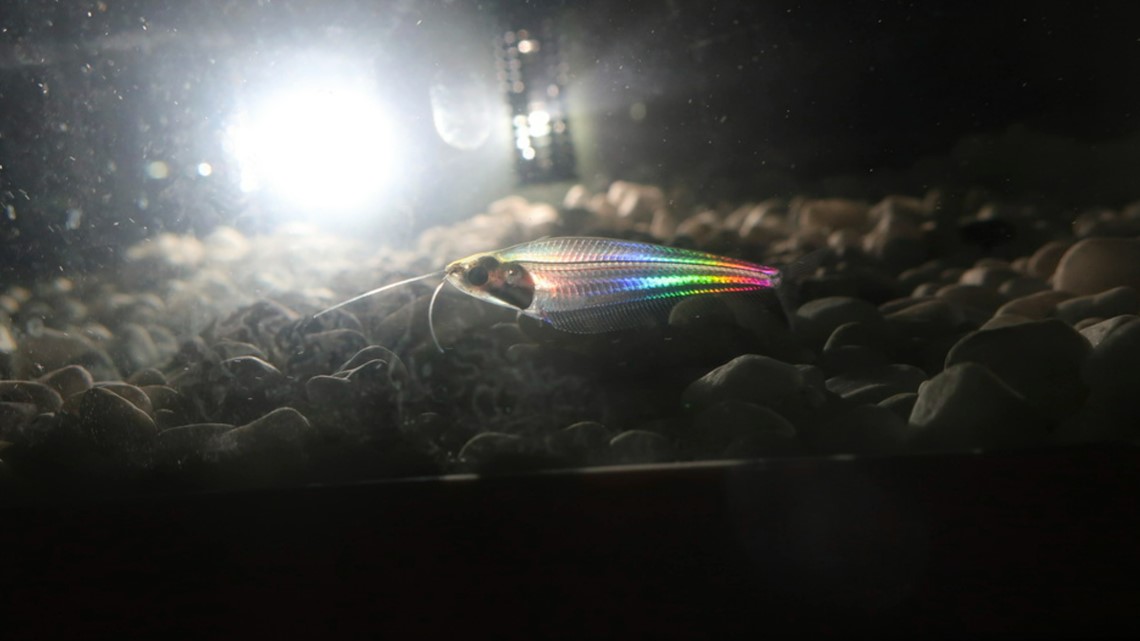NEW YORK — You can see right through this little aquarium fish from Thailand: Its skin is almost completely transparent. But when the light hits it just right, its body flickers with shimmering rainbow colors.
Now, scientists have figured out how this fish — called the ghost catfish — creates its iridescent glow.
That glow comes from within, according to a study published Monday in the journal Proceedings of the National Academy of Sciences. As light passes through the fish’s skin, it hits tiny structures in the muscle that turn the light into a colorful spectrum.
The ghost catfish — sometimes known as the glass catfish — is a small species native to rivers in Thailand, averaging just a few inches (centimeters) long. It's sold around the world as an aquarium fish.
Other creatures are also iridescent, creating the shimmering rainbow effect where colors shift as you move. Usually, they have shiny outer surfaces that reflect the light — like a hummingbird’s feathers or a butterfly’s wings, explained Arizona State University biologist Ron Rutowski, who was not involved with the research.


But the ghost catfish has no scales, said senior author Qibin Zhao, a physicist at China’s Shanghai Jiao Tong University, who became fascinated by the fish after seeing it in an aquarium store.
Instead, it has tightly packed structures in the muscles that can bend light into rainbow hues, which researchers found after shining different lights and lasers onto its body in the lab. As the ghost catfish swims, those muscles relax and tighten, sending off a glinting range of colors.


And the very see-through skin, which lets in around 90% of outside light, is essential: “We wouldn’t be able to see the colors if the skin of the fish is not so transparent,” Zhao said in an email.
Some species use their iridescence to attract mates or give off warning signals, but it’s not clear whether the ghost catfish's colors serve a purpose, Rutowski said.



